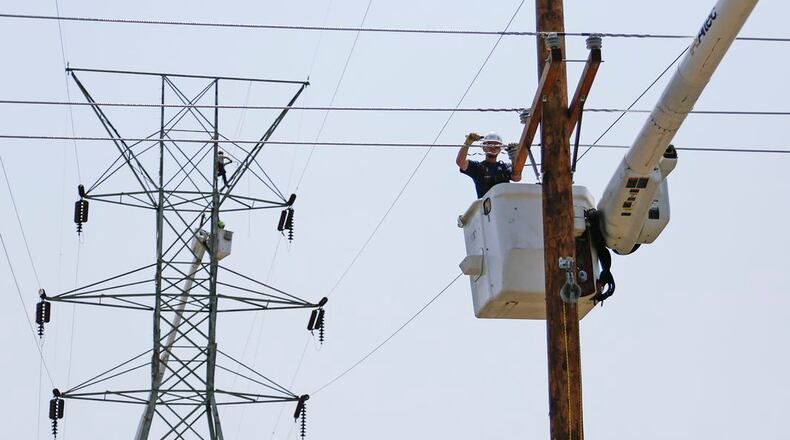PJM projects a peak demand for electricity this summer at about 156,000 MW (megawatts) — and it has more than 186,000 MW of installed generating capacity available. (One megawatt can power about 800 homes, PJM says.)
PJM’s all-time record one-day use of power was recorded in the summer of 2006 at 165,563 MW.
Paul McGlynn, executive director of PJM operations, said in an interview Wednesday that making these kinds of projections is a part of PJM’s job. “It’s a process, something we start back in the winter time, actually,” he said.
PJM says it models extreme scenarios that have no historical precedent, including a combination of multiple unlikely conditions happening at the same time.
“We’ve looked at scenarios where we might see much higher than normal generation outages,” he said.
And if demand is higher than expected, higher even than the capacity PJM has available?
McGlynn said that’s unlikely. But if it happens, PJM has options, he said.
In situations of extreme demand, PJM can deploy what it calls “demand response.” That means calling on a variety of industrial, commercial and even residential customers who have agreed in advance to temporarily reduce their load — basically, curtail or lessen their use of power.
That can mean an industrial user might alter its manufacturing process for a time, McGlynn said. Or it could mean that a big box retailer might agree to cool its store at a temperature of 74 degrees instead of a typical 72.
In exchange, these volunteer response customers see a “revenue stream” from the PJM capacity market, McGlynn said.
It does not mean that these “demand response” volunteers undergo temporary power outages, he emphasized.
“Even under the high system load scenarios, we’ll have sufficient reserves to maintain reliability,” McGlynn said.
Sometimes, PJM can call on everyone to use less electricity.
In the days before Christmas last year, as severe cold descended on the region, PJM asked residents to reduce their use of electricity between 4 a.m. Dec. 24 and 10 a.m. Dec. 25.
The National Weather Service reported a “minimum wind chill” of -38 F at 7:30 a.m. Dec. 23 last year.
“PJM works diligently throughout the year to coordinate and plan for peak load operations, with reliability as our top priority,” PJM President and CEO Manu Asthana said in a recent PJM report on expected summer conditions. “We’re not saying these extreme conditions will happen, but the last few years have taught us to prepare for events we have never seen.”
On Wednesday, the National Weather Service in Wilmington was calling for a high of 90 on Thursday, 92 on Friday and 93 Saturday, with sunny conditions prevailing throughout.
About the Author

